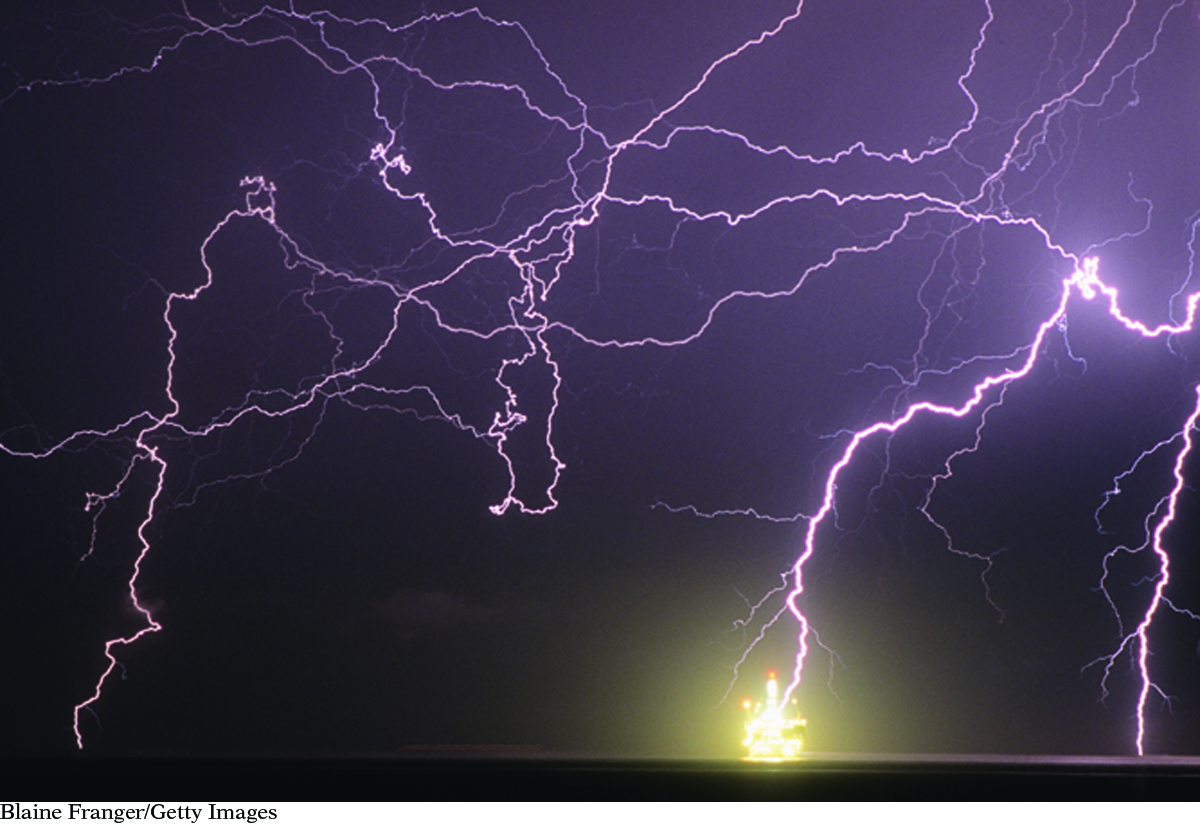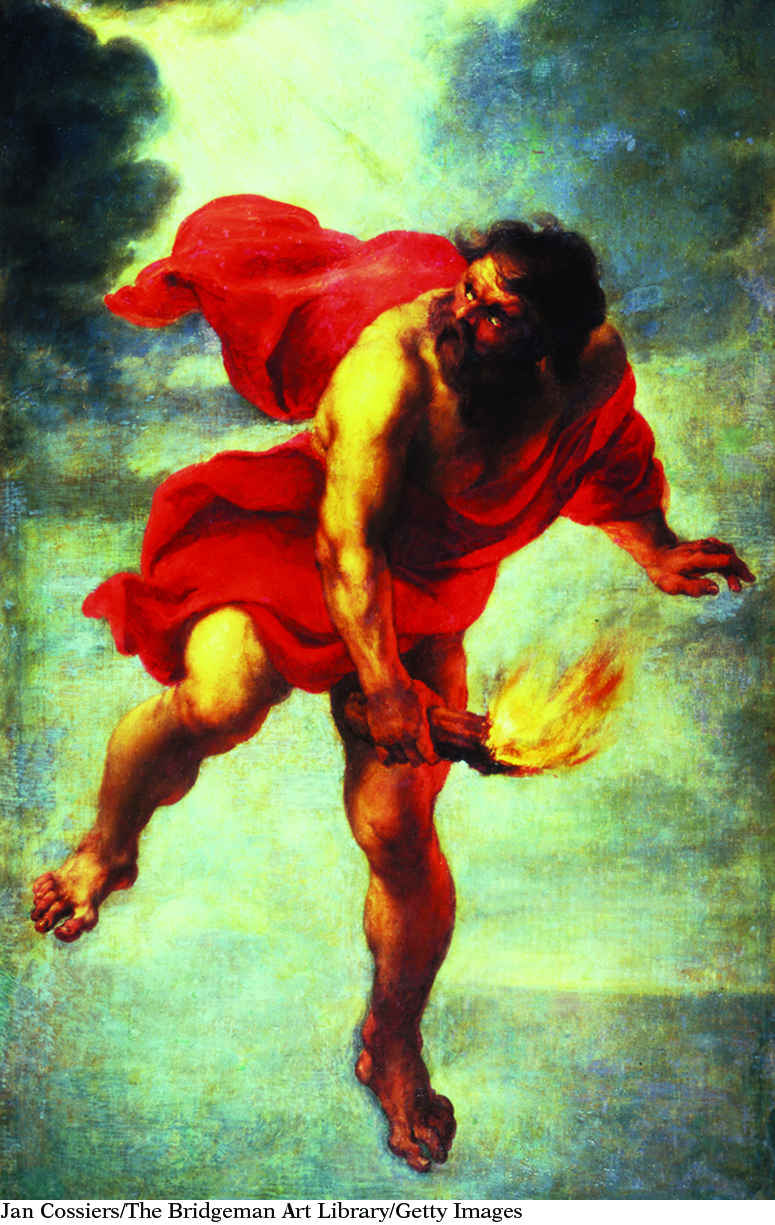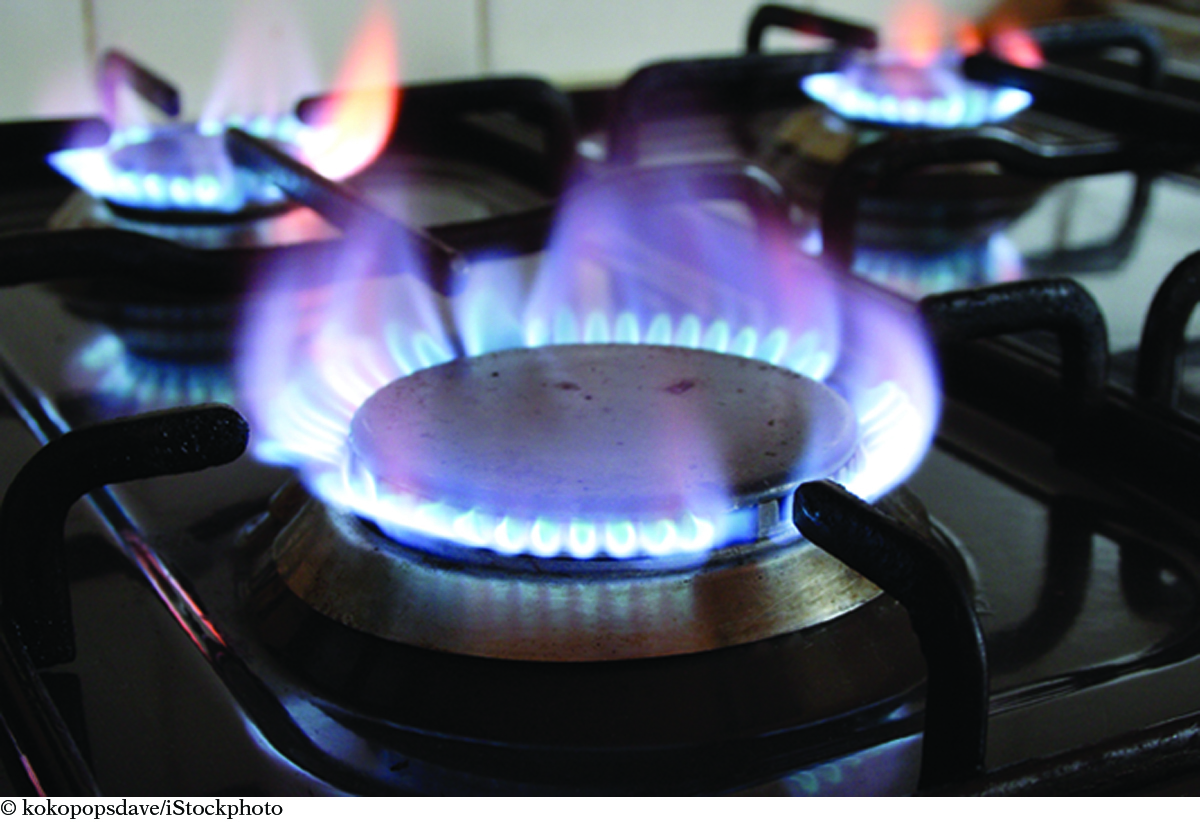LESSON 94: Fired Up!
483
THINK ABOUT IT
ENVIRONMENTAL CONNECTION
ENVIRONMENTAL
CONNECTION
Lightning strikes sometimes cause wild fires. It’s probable that humans first discovered fire through lightning strikes.

Fire is central to our lives. The most familiar fires are wood, oil, and gas fires. When these substances are ignited, brilliant flames leap into the air and there is intense heat. The energy from fire is used to warm homes, to cook food, and to move cars. For millennia, fire has been a vital energy source for humankind.
What reactions are sources of heat?
To answer this question, you will explore
Energy
Exothermic Processes
Energy
EXPLORING THE TOPIC
Energy
The universe consists of matter and energy. As discussed in Unit 1: Alchemy, matter is made up of atoms of different elements. So, what is energy?
LITERATURE CONNECTION
LITERATURE
CONNECTION
Many myths and legends have attempted to explain the origins of fire. According to Greek mythology, Prometheus stole fire from the gods and brought it to humankind. He was punished for it by Zeus.

Because energy is not matter, it is not a substance. Energy does not have mass and it does not take up space. Energy is difficult to describe and define. Take a moment to examine how the word energy is used in the following sentences. What do these situations have in common?

A plant needs energy from the Sun to grow.
An athlete eats a snack bar for energy to continue running.
A campfire provides energy to heat water.
Energy from flowing water makes the waterwheel rotate.
Electrical energy causes the filament in the light bulb to glow.
Pressure from steam provides the energy to move a locomotive.

You may notice that all of the statements are about energy causing something to happen to matter. Matter moves, falls, glows, melts, breaks apart, or burns. In each case, matter changes in some way and energy causes the change to happen. So, one definition of energy is that it is about change. Energy is a measure of the ability to cause change to occur. Even though you cannot see energy or hold it in your hand, you can measure amounts of energy transferred to a substance or from a substance.
Exothermic Processes
Exothermic Processes
484
HISTORY CONNECTION
HISTORY
CONNECTION
The Great Fire of London occurred in 1666. The fire lasted for four days, destroying 13,200 homes. Historians credit this fire with eradicating the rat population and helping to end the Great Bubonic Plague that had killed almost 20 percent of the city’s populace.

The chemical reactions listed here all release energy. This is evident in the flames, the sparks, the light you see, the sounds you hear, and the heat you feel when you observe these reactions. A reaction that creates products that are hotter than the reactants is called exothermic. Take a moment to examine these exothermic reactions.
HEAT, LIGHT, FLAMES
The first two equations involve molecular covalent compounds. They react with oxygen, O2. The products include carbon dioxide and water. Heat, light, and flames accompany these reactions.
Methane: CH4(g) + 2O2(g) → CO2(g) + 2H2O(g)
Propanol: 2C3H8O(l) + 9O2(g) → 6CO2(g) + 8H2O(g)

HEAT, LIGHT, SPARKS
The second set of equations involves elemental substances. Elemental metals and many nonmetals also react with oxygen to produce heat and light. There are no flames associated with these reactions, but sometimes sparks are emitted.
Phosphorus: P4(s) + 5O2(g) → 2P2O5(s)
Iron: 4Fe(s) + 3O2(g) → 2Fe2O3(s)

In all of these exothermic reactions, the reactants change into products that are very hot. These hot products cool down over time as they transfer heat to the surroundings. Exothermic changes are associated with big changes to matter.
FIRE

When you observe fire, matter is changing drastically. As a result of a fire, an entire forest can be reduced to smoke and ashes. During this change, the trees and brush are converted to carbon dioxide and water, which spread out in the atmosphere in gaseous form. Some ash and charred fuel remain after a fire. These are the result of reactants that did not react completely.
485
Flames are generally what distinguish fires from other exothermic reactions. Flames consist mainly of hot gases. The glowing yellow color of a wood fire is caused by small particles of carbon carried into the air by the gaseous products of this exothermic reaction.
Big Idea
Big Idea
Changes in matter are accompanied by changes in energy.
LESSON SUMMARY
LESSON SUMMARY
What reactions are sources of heat?
KEY TERMS
energy
exothermic
Energy is not a substance, so it does not have mass and it does not take up space. However, any change in matter is accompanied by a change in energy. Many chemical reactions are exothermic, which means they result in products that are hotter than the reactants. Fire is an important example of an exothermic reaction that transfers energy in the form of light and heat. In a fire, reactants combine with oxygen to form carbon dioxide and water. The energy associated with fires has many uses such as heating your home, cooking your food, and moving cars.
Exercises
Reading Questions
In your own words, define the word energy.
Use your own words to write a short paragraph describing fire to someone who has never seen it before.
Reason and Apply
Write five sentences that use the word energy.
Describe three ways in which fire is central to life on our planet.
Overnight, the ashes of a fire cool down. What has happened to the products and the heat?
Research uses of fire on the Web. Describe how fire is used in gas heaters to heat homes. Research uses of fire on the Web. Describe how fire is used to generate electricity in a coal-burning power plant.